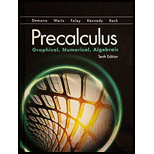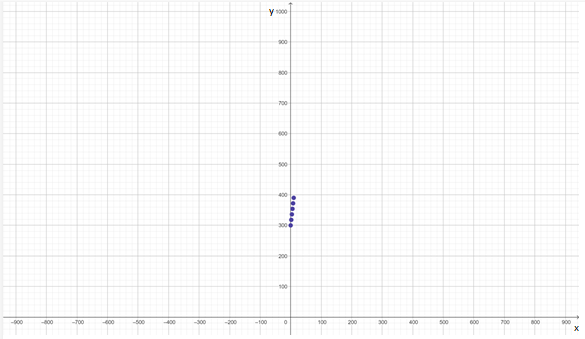
a.
To find: What type of function is graphed.
The function is a line, because the graph is linear.
Given information:
Calculation:
Substituting the value of
Substituting the values for
Graph:

Interpretation:
Since the graph is a line, then the given function is a linear function.
b.
To find: The slope of the lined graph.
The slope of the lined graph is
Given information:
Calculation:
From part (a) it is known that,
The equation for the linear function is given by,
Where
By comparing the above 2 equation to get,
Slope
Therefore, the slope of the lined graph is
c.
To describe: The effect of a graph by increasing or decreasing the interest rates.
The slope gets increases when increasing the interest rates.
The slope gets decreases when decreasing the interest rates.
Given information:
Calculation:
From part (a) it is known that,
On observing from the graph,
The slope increases when the rate of interest increases. Thus, the graph becomes steeper.
The slope decreases when the rate of interest decreases. Thus, the graph becomes less steep.
d.
To find: The simple interest and compound interest and compare both to know which is greater.
The Simple interest is
The Compound interest is
The Simple interest is greater than the compound interest.
Given information:
Calculation:
The compound interest for annually is given by,
Substitute the given values in the above equation to get,
Use linear function to find the simple interest,
Substitute
The compound interest is greater for
But
Conclusion:
The simple interest is greater compared to compound interest.
Chapter 3 Solutions
EBK PRECALCULUS:GRAPHICAL,...-NASTA ED.
 Calculus: Early TranscendentalsCalculusISBN:9781285741550Author:James StewartPublisher:Cengage Learning
Calculus: Early TranscendentalsCalculusISBN:9781285741550Author:James StewartPublisher:Cengage Learning Thomas' Calculus (14th Edition)CalculusISBN:9780134438986Author:Joel R. Hass, Christopher E. Heil, Maurice D. WeirPublisher:PEARSON
Thomas' Calculus (14th Edition)CalculusISBN:9780134438986Author:Joel R. Hass, Christopher E. Heil, Maurice D. WeirPublisher:PEARSON Calculus: Early Transcendentals (3rd Edition)CalculusISBN:9780134763644Author:William L. Briggs, Lyle Cochran, Bernard Gillett, Eric SchulzPublisher:PEARSON
Calculus: Early Transcendentals (3rd Edition)CalculusISBN:9780134763644Author:William L. Briggs, Lyle Cochran, Bernard Gillett, Eric SchulzPublisher:PEARSON Calculus: Early TranscendentalsCalculusISBN:9781319050740Author:Jon Rogawski, Colin Adams, Robert FranzosaPublisher:W. H. Freeman
Calculus: Early TranscendentalsCalculusISBN:9781319050740Author:Jon Rogawski, Colin Adams, Robert FranzosaPublisher:W. H. Freeman
 Calculus: Early Transcendental FunctionsCalculusISBN:9781337552516Author:Ron Larson, Bruce H. EdwardsPublisher:Cengage Learning
Calculus: Early Transcendental FunctionsCalculusISBN:9781337552516Author:Ron Larson, Bruce H. EdwardsPublisher:Cengage Learning





